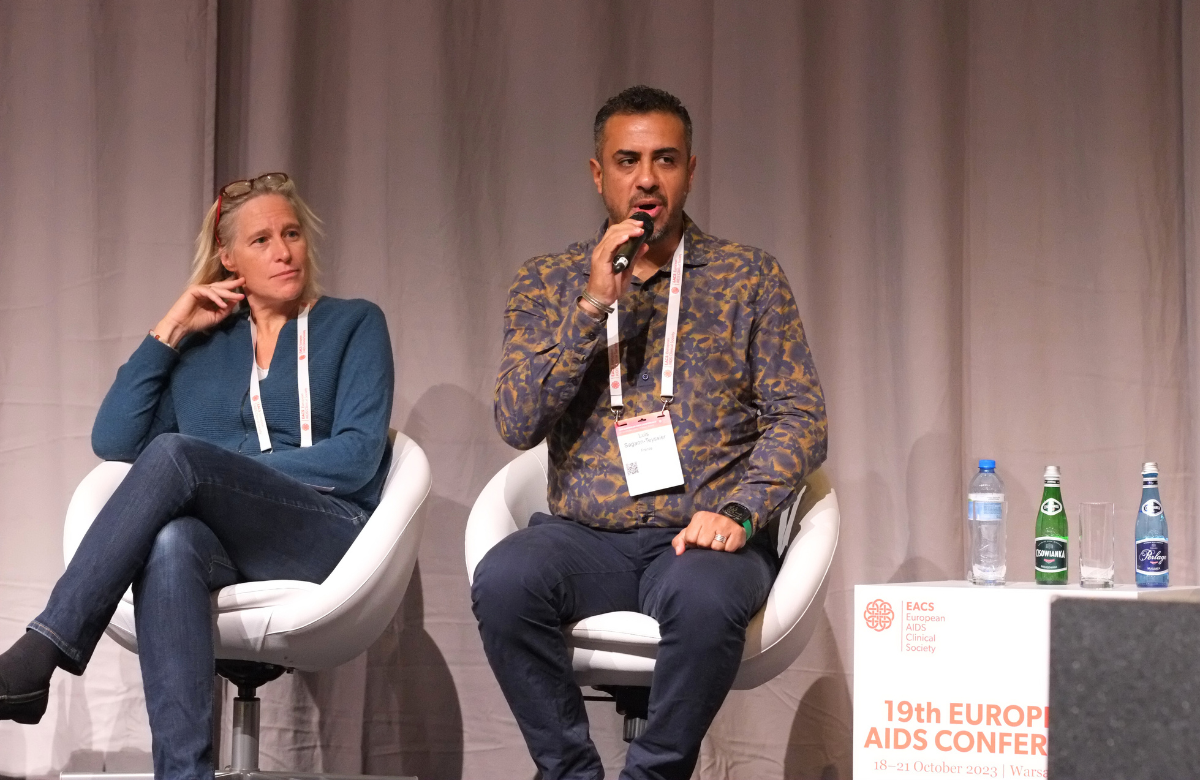Reduced-drug treatment becoming common in Paris

The study findings were presented by Dr Luis Sagaon-Teyssier at the 19th European AIDS Conference (EACS 2023), which took place in Warsaw, Poland, last week.
Drug reduction strategies are designed to reduce exposure to antiretroviral drugs. Two-drug regimens combining dolutegravir with either lamivudine (Dovato) or rilpivirine (Juluca) have proved to be as effective as three-drug regimens in suppressing viral load.
Intermittent treatment regimens – four days on, three days off – have also been investigated. The QUATUOR study in France found that an intermittent regimen maintained viral suppression as well as continuous treatment but with a slightly higher rate of virological failure after two years. However, another study conducted in France and presented at EACS 2023 last week found that a four-days-on, three-days-off schedule for two-drug therapy resulted in a higher frequency of virological failure and drug resistance.
To assess the adoption of these strategies, their impact on viral suppression and spending on antiretroviral treatment, researchers followed 2288 people with HIV who were on treatment in 2015 at the Pitié-Salpêtrière Hospital in Paris. At the start of the study, 78% were taking three-drug treatment and 22% two-drug treatment.
Of those taking three-drug daily treatment in 2015, 23% had switched to two-drug daily or intermittent treatment by 2022 and 19% had switched to three-drug intermittent treatment.
Of those taking two-drug daily treatment in 2015, 60% remained on it, 19% switched to two-drug intermittent treatment and 24% switched to three-drug treatment.
By 2022, half of all patients in the analysis were taking reduced-drug treatment. There was no change in the proportion of people who had an undetectable viral load.
Overall, drug-reduced treatment strategies were associated with a 29% reduction in drug costs and intermittent treatment strategies with a 58% reduction. However, it should be noted that the cost of all treatment strategies fell between 2015 and 2022, partially due to increased availability of generic versions of commonly prescribed drugs.
Increasing treatment switches among people with HIV in London

The research team collected medical data relating to 10,905 people with HIV receiving care from four clinics in London, England, who changed treatment between August 2021 and January 2022. In this period, 984 regimens were changed, adding up to a yearly switch rate of 18%.
Similarly to ten years ago, the main reason for treatment change was drug intolerance, accounting for 37% of all switches.
The researchers also calculated toxicity switch rates for each drug, showing large differences between drugs. Efavirenz, present in Atripla, accounted for a quarter of all intolerance-related switches. Tenofovir disoproxil (TDF), which is present in multiple single-tablet regimens, accounted for 23%, probably due to the availability of the alternative formulation tenofovir alafenamide (TAF). Dolutegravir, a component of Triumeq, Juluca and Dovato, was the third most-switched drug due to intolerance (13%).
The second most common reason for changing treatment was drug interactions, accounting for 33% of all switches in this cohort, an eight-fold increase compared to ten years ago. This may reflect the ageing of many people with HIV, which means more people take treatment for other chronic health conditions.
Treatment simplification was the third most common reason, accounting for 17% of all switches. The most frequently observed simplification was switching from the three-drug regimen Triumeq to the two-drug Dovato.
The rise in treatment switches may be explained by the rapid increase in options on the HIV drug market in the last decade. The more frequent switches are not necessarily a cause for concern; on the contrary, they may reflect the availability of better options and the willingness of clinicians and people with HIV to try different regimens in order to minimise side effects and drug interactions.
Dolutegravir may increase blood clotting affecting stroke and heart attack risk, early findings warn

These were ‘lab dish’ experiments and further clinical assessment in people living with HIV is warranted. Platelets are responsible for clotting the blood when they are activated by stimuli such as tissue injury. However, hyperactivation may result in unneeded clotting, which could increase the risk of stroke, heart attack and other serious health issues.
Renos Keniyopoullos and colleagues at Imperial College London separated platelets from blood taken from donors without HIV. They mixed the platelets with substances found in the body that are known to trigger platelet aggregation (clotting), then added dolutegravir or bictegravir (a similar drug, present in Biktarvy). The amount of drug added reflected the normal blood concentrations seen in people with HIV. In a separate step, they also added the drugs which dolutegravir and bictegravir are usually combined with to assess whether they had an additional effect.
Compared to platelets exposed to one of the natural substances that trigger clotting, the level of clotting observed in the presence of dolutegravir was 3.6-fold greater. In a separate experiment with another natural clotting trigger, dolutegravir doubled clotting activity. Adding the other drugs which usually accompany dolutegravir in various combinations did not change the observed effects.
Bictegravir seemed to slightly increase the clotting activity of platelets, but the effect was very small.
These findings are based on laboratory tests which cannot reflect exactly what may be happening in our bodies. Aware of this major limitation, Renos Keniyopoullos told the conference that the team is working on a follow-up study, in which they will test the activation level of platelets from people on dolutegravir-based regimens.
BMI sufficient to predict diabetes or metabolic syndrome, Italian study finds

BMI (weight in kilograms divided by the square of the height in metres) can be used to predict the risk of developing diabetes or metabolic syndrome (any three of dyslipidaemia, raised glucose levels, high blood pressure or obesity). However, BMI doesn’t capture the distribution of fat or the extent to which muscle contributes to body mass. Visceral fat, which accumulates around the organs, plays a much greater role in the development of heart disease than subcutaneous fat under the skin.
Ethnic differences in body fat distribution and lean muscle mass also contribute to differences in the BMI levels at which the risks of diabetes or cardiovascular disease increase. A recent study in the UK found that people of South Asian descent with a BMI of 23 had the same diabetes risk as White people with a BMI of 30.
However, body composition can only be measured by DEXA scan or MRI and these tests are not available in primary health care or many HIV clinics. Dr Jovana Milić and colleagues at the University of Modena HIV Metabolic Clinic in Italy wanted to find out whether changes in body composition measured by DEXA were better predictors than BMI of the development of diabetes or metabolic syndrome in people with HIV.
The study followed 1895 participants (70% male) for a median of 5.8 years, during which they underwent a median of five DEXA scans.
During the follow-up, 219 people developed diabetes (incidence 1.5 per 100 person-years), 377 developed metabolic syndrome (3.7 per 100 person-years) and 417 developed the composite outcome of diabetes or metabolic syndrome (4.1 per 100 person-years).
Changes in BMI, trunk fat, lean body mass, lumbar bone mineral density and visceral fat, each predicted the development of the composite outcome.
The study investigators found that although visceral fat and lean body mass changes proved the best predictors of the composite outcome, changes in BMI were also predictive. They conclude that if DEXA scanning is not available, BMI and changes in BMI are reliable for estimating the risk of diabetes and metabolic syndrome.
However, as the study did not report on the ethnicity of participants or analyse changes in weight and body composition according to ethnicity, it is not clear if the findings are applicable in all settings.
